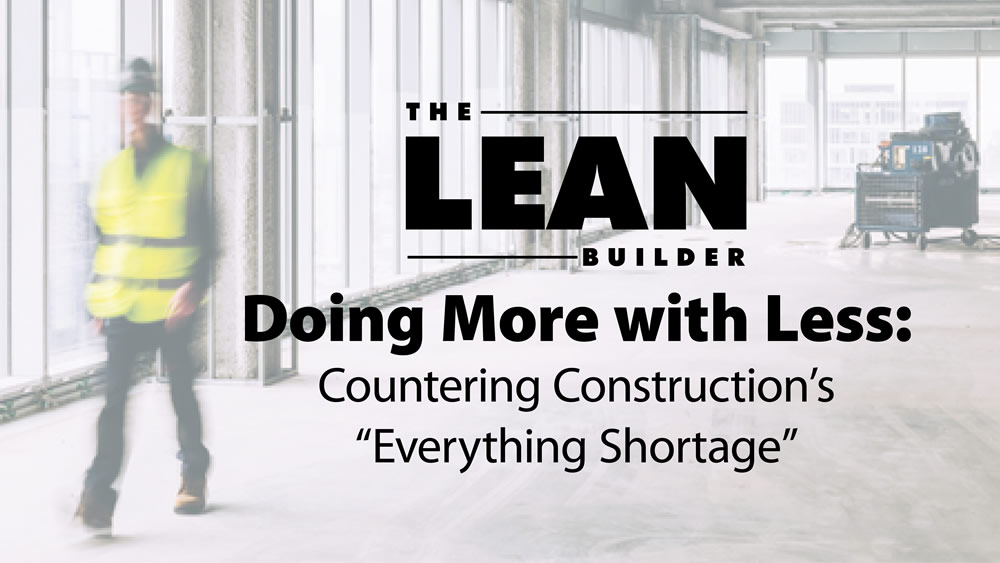Construction is a lesson in contradictions. An industry with high earning potential that’s chronically short of workers. Comparatively low barriers to entry, but too few entering. Utterly critical to every other industry in the world, but as Barbara Jackson puts it, still seen as “just construction.” High demand, but too often, low respect. More work out there than can possibly be taken on, but thin profit margins for even the busiest contractors.
What gives?
Construction Supply Chain Issues and Labor Shortages Abound
The industry exodus of 2008 gave way to an understaffed “new normal,” before construction evolved into a pandemic-era outlier; as businesses shuttered, building boomed. But this demand spike didn’t rewind the tape to 2007. If anything, it exacerbated problems that had simmered for over a decade. It’s at once a unique challenge and just part and parcel of an economy at a bizarre inflection point. Which way things ultimately break is still unknown, but the impacts on construction are already becoming clear.
“I just feel like our industry is changing. We’re having to do way more with way less,” says Keyan Zandy. “Less” is a word that comes up often, whether in the context of labor, the materials shortages that erupted around the world as a result of supply chain chaos, and time available to complete projects that have steadily increased in complexity in the past years.
Lean’s reputation took a beating during the supply chain snarls that took whole sectors down with them (ask steel, toilet paper, and baby formula what they have in common). Any good idea can be taken too far, as became clear when many overzealous implementations of “just-in-time” inventory management laid bare. But Lean thinking is still much more a solution to today’s shortfalls than the cause.
Lean construction planning can help companies grappling with shortages of labor and materials offset those challenges with more efficient scheduling that makes the most of workers’ time. Lean methods such as the Last Planner System® coupled with construction scheduling software and other digital tools can ensure that teams don’t show up to sites that aren’t ready for them, and that they have the information they need in order to complete their work efficiently. Better planning also reduces the likelihood of material lead times becoming a source of delay. More accurate planning also reduces the need for rework, minimizing wasted time, money, and effort.
A War for Talent
“We’re not competing against each other anymore for resources. We’re competing against every other industry that’s out there for the talent within the construction industry. And that’s the biggest difference, and people aren’t realizing that,” says Joe Donarumo.
Arguably, more are starting to. Many companies are waking up to the fact that, as Peter Drucker put it, “culture eats strategy for breakfast,” and are investing time and money accordingly. These efforts are easier to implement at larger contractors with the resources and corporate operations to support a sustained focus on building a company culture that attracts and retains employees effectively. For the companies that have gone all in, Lean is an obvious vehicle for improvement.
“A big part of The Lean Builder [is] trying to give back to those people to help give them a better quality of life by teaching them some ways that they could work more efficiently on the jobsite,” explains Zandy. Lean construction practices offer a highly effective framework for tangibly improving work-life balance. “What I hope to see is a lot of companies stepping up, thinking about the people that are putting in the work, trying to figure out a way to make their job easier, make their life easier, make those jobs more exciting,” continues Zandy. “And I think Lean is a pathway to that, but we got to focus on this next generation.”
“I don’t know how I would’ve been able to deal with the dysfunction and the frustration and the lack of respect without having found Lean tools and methodologies and a different way to go about treating people with respect and creating some tools to really help give that power back to our field leaders,” says Donarumo.
Tomorrow’s Jobsite
Unlike many industries, construction’s future is secure in many ways. Demand, especially for housing and key infrastructure, is high, and ChatGPT isn’t going to learn to pour concrete. But ensuring that there are enough workers interested in construction careers and materials affordable enough for contractors to maintain decent margins will require a sustained industry-wide focus over the coming years.









